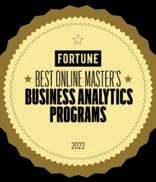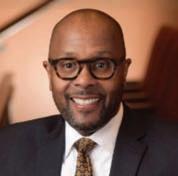NEIGHBORHOODS’





When Frank Camardo and his older brother, Sam, bought a cluster of vacant commercial buildings in Cleveland’s Old Brooklyn neighborhood, they expected it to take ve years to ll the forlorn storefronts and sketch out the future of the surrounding land.
en they heard about a pilot program that o ered matching grants of up to $50,000 for interior renovations along commercial corridors. at funding, through Cleveland Neighborhood Progress, allowed the developers to white-box the space — redoing the oors, patching the walls and creating a nearly movein-ready canvas.
See PLANS on Page 16
After 30 successful years as a sports attorney and agent — a stretch where he negotiated more than $2 billion in professional sports contracts, earned the respect (and the ire) of dozens of NBA owners and GMs and became known as “the secret weapon behind LeBron James” — Cleveland native Mark Termini took the next logical step in his career. He wrote a book.

(Oh, and he sees you rolling your eyes.)
“Ah, Termini’s got a book,” laughed Termini, whose name rhymes with Germany. “It’s going to be Termini’s life story. ‘When I was in eighth grade, I shot 1,000 free throws ...’
“Believe me, all my guys smile and go, ‘Oh yeah? You wrote a book?’ and I know they’re cringing inside.”
See TERMINI on Page 16
Apartment project may replace old dealership
By Stan Bullarde former Steve Barry Buick properties in Lakewood are under the control of Rocky River-based real estate developer NewBrook Partners, whose partners have signaled plans for a major apartment-retail project on the site.
Lakewood Detroit LLC, which lists NewBrook’s o ce in downtown Rocky River, paid $2.6 million for the 2.74-acre site, according to Cuyahoga

Even after 25 years, Cleveland Browns P.A. announcer Jeff Shreve still enjoys manning the mic.
PAGE 8
CRAIN’S LIST

Jones Day tops the list of Northeast Ohio’s largest law rms with 172 local attorneys, Benesch is second.

PAGE 14
County property records. e property, which spans both sides of the street around the 16000 block of Detroit Avenue, was sold July 6 by Fairlane Realty Co. of Lakewood.




NewBrook plans to pursue a mixed-use project consisting of apartments with retail space and amenities for tenants on the rst oor, according to Shawn Leininger, Lakewood director of planning and development.
See DEALERSHIP on Page 17
FNS Inc., a California-based subsidiary of a South Korean logistics company, has gobbled up a mammoth warehouse in Portage County.
e company recently inked a long-term lease on Gateway Commerce Center, a 434,000-square-foot structure developed by the Geis Cos. and Westminster Capital. e deal shows that there’s sustained demand for modern industrial space, despite slower transaction activity across the commercial real estate industry.
Conrad Geis, president of development for Streetsboro-based Geis Cos., con rmed the outlines of the deal but declined to discuss many details. rough Geis, FNS declined to comment.
“ ey’re partnered up with an automotive manufacturer,” said Geis, who believes the building will be used for storage and distribution of materials for the electric vehicle industry.
FNS is a liated with LX Pantos Logistics, a major transportation and logistics rm. e parent company has a relationship with LG Corp., the South Korean conglomerate that has several projects underway in Ohio. One of those projects, through LG Energy Solution, is a joint venture with Honda Motor Co. Ltd. on an electric vehicle battery plant being constructed in Fayette County, southwest of Columbus.
At this point, it’s unclear exactly what materials will pass through the Streetsboro facility or how many people will work there. Patrick O’Malia, the city’s economic development director, said he’s still in the dark.
“I
doing,” he said. “I wish I did.”
But a tax-abatement agreement between Geis, the city and the local schools requires the project to create 180 to 200 full-time jobs by Dec. 31, 2025, with at least $9.125 million in gross annual payroll. In exchange, Streetsboro agreed to provide 10 years of 100% property-tax abatement on Gateway Commerce Center – a powerful incentive that was part of Geis’s pitch to tenants.
As part of the abatement agreement, Geis also donated land on Aurora-Hudson Road for a city park and contributed money to the local park system, the city’s bicentennial celebration and local schools, Mayor Glenn Broska noted in an emailed statement.
e FNS deal, coupled with Restaurant Depot’s decision to build a distribution center on neighboring land just south of
Gateway Commerce Center, shows that “Streetsboro remains one of the premier destinations for industrial development,” Broska added.
Geis and Illinois-based Westminster teamed up a few years ago on plans for the huge, speculative warehouse o state Route 43, about a mile north of the Ohio Turnpike. ey started construction in October 2020 and nished the core and shell of the building in September 2021.

Several tenants looked closely at the project, and most of them were interested in taking the entire footprint, Conrad Geis said. Before FNS, the strongest contender was Amazon, but the e-commerce giant scrapped its plans for dozens of warehouses last year amid slowing sales growth.
David Stecker, a managing director in the JLL brokerage’s local o ce, handled leasing for Geis
and Westminster. Citing con dentiality requirements, he declined an interview request but sent an emailed statement that did not mention FNS.
“ is lease symbolizes the continued demand for industrial product in Northeast Ohio through the economic headwinds we have been experiencing over the last 12 months,” Stecker wrote, crediting the developers for their vision and expertise.
Geis, which is nearing completion of a 1 million-square-foot warehouse in Shalersville, east of Streetsboro, is seeing steady inquiries from prospective tenants. But companies are taking much longer to make decisions. “ ere’s a lot more internal analysis going on from a user standpoint on making a leap and moving,” Conrad Geis said.
FNS isn’t totally new to Northeast Ohio. e company has a
long-term lease in nearby Ravenna, on Loomis Parkway. at lease spans 150,000 square feet of a 420,000-square-foot, multi-tenant building owned by Industrial Commercial Properties LLC of May eld Heights.
Dennis West, Ravenna’s economic development director, said city o cials believe that FNS is adding to its regional footprint, not leaving Ravenna for a larger footprint in Streetsboro. But, he acknowledged, “this is all kind of mysterious to me. I think it’s kind of mysterious to everybody.”
Chris Salata, chief operating ofcer for Industrial Commercial Properties, con rmed that FNS is still a tenant at the Ravenna property.
“We’re aware of the Streetsboro transaction,” he said, “but we have not been formally noti ed by FNS as it relates to their tenancy in Ravenna.”
Barberton is getting some help putting one of its larger former industrial properties back to work for the city just southwest of Akron.

Summit County Executive Ilene Shapiro announced Wednesday, Aug. 9, that the county has been awarded $350,000 from the Ohio Department of Transportation for the Newell Street Industrial Park project in Barberton.
e 36-acre site, which once housed some Rockwell International operations, already has been cleared of its old structures, save for two small buildings that the city says also are being removed. It has been owned since late 2022 by the Barberton Community Foundation, and the foundation is working with the city to sell it to a buyer who will again use it for industrial purposes.
Mayor William Judge described it as “the largest piece of developable land left in Barberton.”
Ted Herncane, director of economic development for the Barberton Community Foundation,
which works closely with the city, said earlier this year that the foundation was beginning to see interest in the site, including from one local company that was considering taking about 15 acres to expand its local operations.
Now both Judge and Herncane say they can do more to market the land and possibly increase its val-
ue to the city and the ultimate buyer. For one thing, they’ll soon tear down the remaining two buildings on the site, they said.
“ e buildings left are an o ce building and a small barn building on the property,” said Herncane, adding that the larger o ce building is about 13,000 square feet in size.
e new money, however, will
go toward improving access to the site, Judge said.
“ e grant money is going to go toward roadway and signal improvements on Newell (Street) and Norton (Avenue),” he said. Better signaling on those roads will make it easier for trucks to get in and out of the Newell Street site, Judge added.
e new funds come to Barberton through Summit County, but they’re a grant from the Ohio Department of Transportation and are meant for Transportation Improvement Districts across the state, according to the county.
Judge said he’s particularly pleased to see the city and foundation win funding for this site, on top of the fact that the project was one of only 10 statewide to get funding from ODOT.
“ is is huge,” Judge said of the award. “I was born and raised here, and this has always been an industrial site. It’s close to the highways and has rail access. ... For me it’s a property that is very meaningful to get up and operating again, from a historical perspective.”
Shapiro congratulated the city and foundation for their work on the project.
“We are very proud of the strong collaboration that resulted in our successful TID application and are con dent it will lead to exciting growth in Barberton. ese critical investments in infrastructure are the foundation for job creation and retention,” Shapiro said in a statement.
Herncane said the local company he was talking to in the spring has been moving forward with its plans to purchase part of the site.
“We anticipate a purchase agreement with them this fall,” he said.
Meanwhile, Herncane reports other interested buyers have emerged for other parts of the site.
“We’re meeting with another company next week on another ve-acre piece and we’ve had conversations with a developer who’s interested in some property there for a building as well,” Herncane said. “ ere’s a lot of interest. With the size of the property, there may not be enough to go around.”
just don’t know what they’reA logistics company has leased the entirety of Gateway Commerce Center, a 434,000-square-foot warehouse in Streetsboro, off state Route 43. | GEIS COS. The 36-acre Newell Street site in Barberton is mostly scraped clean and being marketed to potential buyers who could return it to industrial use. DAN SHINGLER
Don’t look now, but another multibillion-dollar business has emerged in Northeast Ohio, this one in the suburban city of Green between Akron and Canton.

Most people likely haven’t noticed, but former Diebold executive Tony Byerly and his team have built Securitas Technology into an international force with annual sales of about $3.1 billion.
at’s OK, though. Byerly isn’t in the business of being seen; he’s in the business of watching.
“We have 10 monitoring stations around the U.S,” Byerly said in a room lled with dozens of Securitas sta ers monitoring locations around the nation. “ is is one of the largest. e other one that’s very large is in Plymouth, Minnesota.”
Securitas Technology is a unit of Sweden’s Securitas, an even larger corporate security company that provides guards, investigations, mobile patrols, monitoring and other types of security, with more than 300,000 employees and annual sales of more than $13 billion.
Down in Green — Byerly likes to say Uniontown, which is technically a “Census-designated place” inside of Green — they handle the electronic side of the business.
at’s not to say that all those monitors are watching every property Securitas secures constantly; that would be nearly impossible.
e company watches over thousands of factories, warehouses, airports and high-pro le sites like Ground Zero in New York City.
“My business is in 40 countries,” Byerly said, adding that “the largest presence is in the U.S. and Europe. ... ey’re probably about 80% of our business.”

e company has computers and algorithms to do the constant monitoring, and humans are
alerted when something suspicious takes place. But cameras are still king in the security business.
“ e fastest-growing segment is still video, by far,” Byerly said “And that’s where AI is going, by the way.”
Meanwhile, Securitas monitors the goings-on in all of the places where it has clients — watching the weather for threats and monitoring news outlets so that it’s on top of any instances of civil unrest or other security threats, Byerly said.
ose human monitors aren’t



just hired in and plopped in front of a screen, either.
First, they get three weeks of basic training, After that, they spend time working as monitors but with an experienced monitor by their side, sort of like a driver with a learner’s permit. After about two months of total training, they are tested to be certi ed monitors, and then they’re certi ed by the industry’s trade group, e Monitoring Association, before they can work on their own.
It also mans or maintains onsite monitoring and command centers at important client sites, Byerly said.
None of that, of course, can take place before Securitas Technology’s clients are wired up and connected. For that, the company has 5,000 eld technicians installing cameras, lights, sensors, identication devices and other equipment, as well as designing systems for clients that tie it all together into a cohesive cocoon of protection.
e company has a room full of toys for clients to check out, also in Green, from near-instant ngerprint scanners and retina identication systems to more mundane things like card readers.
Ironically, Byerly’s building the company in a building once owned by his former employer —
and Securitas Technology’s existence is a result of Securitas’ acquisition of Diebold Nixdorf’s former electronic securities business for $350 million in 2016, Diebold reported at the time.
Since then, Byerly has been rebuilding it from the ground up, beginning with the 67,000-squarefoot building that now houses Securitas Technology. at was completely gutted and rebuilt as modern o ces and with new wiring and cables all installed in the oors, Byerly said.
He also has built Securitas Technology via acquisition, most notably its purchase of Stanley Security from Stanley Black & Decker in July 2022.
“ at was a $3.2 billion transaction that doubled our business,” Byerly said.

It also more than doubled the number of monitoring stations Securitas Technology has and doubled its headcount.
“We have a combined 13,000 employees worldwide now,” Byerly said.
Since then, Byerly said the business has continued to expand, and now has more assets to continue its growth.
“We doubled our size in most of our markets,” Byerly said. “We have a broader o ering and a broader reach now.”
Centennial Plaza, a strip center in the shadow of Classic Auto Group Park where the Lake County Captains play, has been acquired by an a liate of Sandor, a large shopping center company with holdings in 25 states.
e strip center was the subject of a heavily publicized auction by Ten-X and CBRE Group in June that was concluded the rst week of August, according to online postings.

Sandor lists the property at 35400 Vine St. on its website. It also is listed as the owner on CoStar, the online retail data portal, which said it paid $1.67 million
for the 15,000-square-foot convenience plaza.
However, Lake County public records do not show a transaction for the convenience center, which indicates Sandor bought the limited liability company owning the real estate.


Kevin Moss, a CBRE rst vice president, declined to disclose the buyer or seller, but said in a phone interview that the auction had a successful conclusion.



“ e buyer was excited by the opportunity to have signage on the plaza visible to fans in the stands,” Moss said. Vince Mingo, a CBRE senior associate, also worked on the sale. Moss added that the auction drew nine registered bidders and 139 prospec-
tive bidders signed con dentiality agreements for nancial records of the property. e auction carried a starting price of $700,000 for the plaza.
e seller, Vine Street Properties LLC of Willoughby, constructed the plaza oriented to convenience-center tenants, in 2004, a year after the minor league baseball stadium was completed. It is home to seven tenants, including a Chase Bank branch, and has two storefronts vacant, CoStar said.
Sandor has dual headquarters o ces, one in Indianapolis and the other in Scottsdale, Arizona, according to its website. It has a portfolio of retail properties totaling 8 million square feet.

e restaurant business continues to have ups and downs, but Whitestone, New York-based Restaurant Depot plans to put up a huge distribution center at 10198 state Route 43 in Streetsboro.
e wholesale food and related products supplier has commissioned Republic Property Co. of Atlanta to construct a 150,000-square-foot refrigerated and dry storage building. e project was approved for a sales tax exemption for a $45 million project from the Portage County Port Authority.
e project has received a 30% property tax abatement for ve years from the city of Streetsboro, according to Patrick O’Malia, Streetsboro’s economic development director.

e operation will create an estimated 31 jobs on a full-time

equivalent basis.
“Unlike traditional warehouses, cold storage is less likely to face automation pressures and typically o ers higher pay to employees (thus increasing city income tax collections) to deal with the working environment,” O’Malia said.
e new distribution center will serve Restaurant Depot stores in Akron, Cleveland and other parts of the state, according to information Republic Property led with the city.




O’Malia said the city worked with the developer to move chillers and other temperature-control equipment from the south side of the building to the side adjoining another warehouse in order to alleviate noise for neighboring residential neighborhoods.

Seth Morris, a Republic Property vice president, in an email declined comment on the proj-






ect.

Republic Property in 2020 constructed a slightly larger building, also providing refrigerated storage, for Restaurant Depot in Commerce, Georgia, according to the realty developer’s website. Republic Property has retained nine contemporary warehouses in its portfolio and operates as a design-build developer for its clients, according to its website.
Republic Property acquired the 14-acre site for the Restaurant Depot project from an a liate of Geis Cos. of Streetsboro for $3.2 million, according to Portage County land records.


Business and industrial park owners frequently sell land to out-of-town developers who have a build-to-suit tenant in tow.
Restaurant Depot focuses on independent restaurants and has stores throughout the United States.


“Benesch is flexible, customer-facing, not afraid to jump on airplanes, transparent…it really has become a partnership that has far exceeded a traditional client-attorney relationship.”










 WILL
WILL
MICHAEL BARRIE
SUSAN ETERNO*
JACOB MARSHALL
ANDREW MARATEA
JUSTIN DYKSTRA
STEVEN WALSH
ALEX AMEZCUA
BLERTA MILETI
LAURA HULT

JUAN MARTINEZ





ANDREW NICOLL

ERIN O’BRIEN
MICHAEL SWEARENGEN
JEFFREY WILD
*Paralegal
In the alternative investment world, deals are rarely cookie-cutter, and the road to success can take many different paths. Will and his team rely on Benesch to help avoid pitfalls while leveraging opportunities, always working to steer the ship in the right direction. Whether executing a real estate lending transaction, managing litigation, or overseeing a loan workout or bankruptcy, Benesch serves the team’s day-to-day legal needs while providing a deep bench of experienced, forward-thinking attorneys to keep them a step ahead.
How can we help your team stay ahead?

In an election that never should have happened, Ohio voters on Tuesday, Aug. 8, demolished Issue 1 — the measure to make it harder to amend the state constitution — by a margin of 57% to 43%. More than 3 million people voted, an extraordinarily strong number for August, when people should have better things to do when winding down summer than rejecting legislators’ overreaches. With the double-digit victory margin in mind, here are 10 takeaways from the election:
1. Nothing changed, but everything changed. Voters decided an amendment process that has been used modestly for 111 years worked just ne, and that there was no need to establish a 60% threshold to pass amendments that already have met the high standards for making it to the ballot. (On top of things, Issue 1 would have made it tougher to get issues on the ballot in the rst place.) ey rebuked Issue 1 as an undemocratic power grab.

2. is wasn’t strictly a red/blue thing. One of many examples: Medina County, which now-Sen. JD Vance, a Republican, won last year with 59% of the vote, was decisively in the “no” column on Issue 1, 54% to 46%.
3. Republicans should try harder to understand what voters want. Ohio’s a right-of-center state that Donald Trump carried by 8 points in 2020, and Vance won by 6 points in 2022. But voters are not eager to hand over more power to politicians, and a lot of Trump/Vance voters rejected Issue 1. e “no” vote crossed party lines and even some urban/rural divides, and it brought together a diverse set of organizations across the state.
4. Voters in big Democratic counties statewide, in particular, were highly motivated. Cuyahoga County turnout topped 38%, and Summit County was above 41% — extraordinary numbers for an August election. ese were by de nition special circumstances, but Ohio would be better o with higher levels of voter participation in every election.
5. e Ohio GOP was right before it was wrong about the cost of August special elections. What an unnecessary expenditure of time and public money this was. (And don’t get us started on how much money outside groups spent in the race, though the “yes” side com-
I teach a course in the business school at Kent State University. Every semester, I advocate for and describe the value of sustaining a diverse workforce.
State legislators recently passed a law forbidding Kent State from requiring me to teach the bene ts of DEI initiatives. e law is moot in my case. I will happily continue to expound the nancial and other bene ts of sustaining a corporate culture that promotes diversity, equity and inclusion. ose bene ts are tangible and signi cant.
McKinsey & Co. has conducted a good deal of research into this issue. A study of more than 1,000 rms in 15 countries reports that the relationship between diversity on executive teams and the likelihood of nancial outperformance has only gotten stronger over time.
In 2019, companies with the top gender diversity initiatives were 25% more likely to be top nancial performers. Companies with the top racial diversity initiatives were 36% more likely to be top nancial performers. Both gures are up substantially from studies conducted just four years earlier.
Other studies have shown similar signi cant association between diversity and corporate performance:
plaints ring hollow, given that they were the ones who wanted this election.) e state spent at least $16 million to stage the election, which was called less than an hour after polls closed. Next time you complain about government waste, think about the e ort to enact Issue 1.
6. e Ohio Chamber of Commerce, the National Federation of Independent Business and other groups that supported Issue 1 were ine ective in this election and will have to sharpen their political skills to stop potential amendments on issues such as raising the minimum wage and legalizing recreational marijuana. ey’ll be on more solid ground with their arguments on those and other matters.
7. Don’t make any assumptions about what will happen next. Issue 1 was a proxy ght over abortion, but now we’ll get a heated campaign for abortion rights amendment on the Nov. 7 ballot. A July poll by the USA Today Network and Su olk University found that 58% of likely voters in Ohio supported the abortion amendment, and results in other states — Kansas, Kentucky and Michigan — suggest it could pass with the 50% threshold. But a general election is entirely di erent, and the pro-life side will rally to spend to get voters out.
8. Grassroots energy on cultural issues looks to be swinging to the liberal side. Republican legislators at the Statehouse should keep that in mind when they go out of their way to wage culture wars rather than sticking to the business of creating a pro-growth environment for companies to thrive and employ more Ohioans.
9. After results were in, Ohio Senate president Matt Hu man said, “I think you’ll probably see the question coming back” at some point in the future. at’s delusional. Voters spoke quite clearly. A little GOP self-re ection is in order. e idea of raising the threshold for amending the state constitution belongs in history’s dustbin.
10. Ohio AFL-CIO president Tim Burga said it best in summarizing where the state should go from here: “We now call on lawmakers to listen to the voters, stop advancing issues that only serve to divide us and get to the business of advancing policies that help all Ohioans fulll their potential and improve their quality of life.”
Executive Editor: Elizabeth McIntyre (emcintyre@crain.com)
Managing Editor: Scott Suttell (ssuttell@crain.com)

Contact Crain’s:
Companies with a higher proportion of women in their executive committees possessed stronger nancial performance, including a 41% increase in return on equity, on average.
In the United States, there is a linear relationship between racial and ethnic diversity and better nancial performance: For every 10% increase in racial and ethnic diversity on the senior-executive team, earnings before interest and taxes (EBIT) rise 0.8%.
Companies with above-average total diversity had 9% points higher EBIT margins, on average.
Anti-diversity voices tell us that hiring should be done only on merit. Sadly, that argument is made by many who assume that women or minorities aren’t the best candidates for the job in the rst place. (Our country has a long history of being told that women and people of color are inherently unsuited for other than the most menial jobs.)
It also ignores the well-substantiated fact that diverse teams are better at problem solving, decision making and innovation than are more homogenous teams. A new global study of more than 2,000 companies carried out by the Enterprise Strategy Group nds that DEI programs can enhance organizations’ competitive position, agility, innovation and brand perception.
In addition, research supports the argument that diversity improves employee morale within organizations. One study of employee performance revealed that “working in a diverse team” is among the top ve most important drivers of employee engagement and discretionary e ort in the workplace.
Further, evidence of a strong commitment to DEI goals is an important consideration for job seekers of all backgrounds. A Glassdoor study found that more than 3 of 4 job seekers report a diverse workforce is an important factor when evaluating companies and job o ers. Companies without strong DEI e orts will nd it harder to recruit strong candidates of any background.
Diversity clearly provides a strategic advantage to those organizations that pursue it a rmatively and e ectively. ese and other studies show that corporate leaders who don’t implement strong and e ective DEI initiatives will face strong headwinds in the marketplace in coming years.
The powers that be are asking area citizens to o er opinions on proposed lakefront development in Cleveland.
Even if you were a certi ed engineer and an architect, I think you would have trouble o ering reasonable suggestions about the proposals.
But that’s OK. Because those powers don’t really want your opinion anyway. ey just want to be able to say the public was o ered a choice.
Not really.
ose private forces that often decide how public money is spent and on what tasks have been on a three-decade roll. Really since 1980.
Where do the limited resources of the community go and who decides? In other words: Who rules?
Cleveland su ered the economic decline of manufacturing after World War II and the rise of civil unrest in the 1960s. “Pray for Cleveland” bumper stickers began to appear.
Roldo Bartimole wrote and published a political newsletter, Point of View, from 1968 to 2000. It is available on Cleveland State University's Memory Project website.

is demanded the attention of the usual forces that guided how things are run.

What changed was the two-year mayoral reign of Dennis Kucinich. Both its incompetence and anti-business reputation of unnecessarily poking the eye of corporate forces made it an easy target. George Voinovich was elected mayor.
at covers a lot of local history quickly. But it brings us to the present time.
e establishment forces have taken control ever since. And they bragged about it in a 1989 Fortune magazine piece.
e article — clearly with input from Cleveland business leaders — sounded as if there were a war here.

It said that the Cleveland business community “organized the troops and devised a strategy, setting in motion a benign conspiracy that still operates. e impressive feat of organizing that cabal and persuading Cleveland’s most senior businessmen to take charge of the grittiest aspects of city life…”

What Fortune was describing was a political coup.
And they did just that, as the record would show.
Kucinich had ridden to the mayor’s o ce by strongly opposing tax abatements. And during his term several buildings were erected subsequently without abatements — Eaton Corp. headquarters, Medical Mutual, Ohio Bell, the Sohio building and North Point.
It was a lesson all local politicians understood.
After the Fortune article coup, abatements owed.
Indeed, the Cleveland putsch led to a rush of public gifts to private interests.
During this period, developer Dick Jacobs collected more than $20 million in Urban Development Action Grants (UDAG) from city hall for developments at the Galleria, the Public Square O ce Tower (Key Center) and the Marriott Hotel. ey were structured as loans payable at zero interest rate and not due for 20 years. e city added 100% tax abatement for Key and the Marriott.
You cannot get more generous terms than that. It was close to free money.
UDAGs are federal money given to cities based on high poverty rates.
is was a hint of what the Fortune magazine coup story promised.
And it was just the beginning.
Tower City got UDAGs at the Terminal Tower complex of $14.7 million and $9.2 million for the Old Post O ce Building.
e Ritz hotel got a $7.9 million UDAG plus a 15-

year 100% abatement worth $34.5 million.
e Halle building renovation got a $7 million UDAG, a state industrial loan of $10 million and a historic designation gift of $5 million.
Playhouse Square got a $750,000 UDAG for the Ohio eater and another $5.5 million UDAG via the city for its parking garage.
Wyndham hotel, a Playhouse Square development, got a $13 million tax abatement, an added TIF (tax incrementalnancing) abatement, $3.1 million. e city added a community block grant of $4 million and the state of Ohio loaned another $4 million.
e nearby Wolstein Renaissance building received a $7.7 million property tax abatement.
e Arcade & Hyatt hotel deal was showered with tens of millions in various tax subsidies only to have its owners soon after seek signi cant property tax reductions to lower its existing property taxes for prior years.
All this paled in contrast to what the business revival produced in subsidies for sports teams. e Gateway Development project included the $157 million basketball arena and the $180 million baseball stadium. e city of Cleveland built two parking structures at $42 million plus interest on bonds.
It was costly but no problem. City and county ocials spared no cost.

e sin tax for the rst 15 years cost taxpayers $240 million in regressive taxes that weigh most heavily on low income people.
e tax was renewed for 20 more years, yielding $12 million to $13 million for another expected $260 million cost.

Cuyahoga County bonds on arena overruns paid annually ( nal payment this January) totaled some $100 million, from the county’s general fund plus some city money from admission tax income.
Cleveland Mayor Michael White and Cuyahoga County Commissioner Tim Hagan successfully campaigned for a state law to relieve all sports facilities of property taxes forever. It cost the Cleveland schools, since the facilities were built in Cleveland, half of the some $7 million annual loss in property taxes countywide.
Cleveland, one of the poorest cities in the nation, nanced the football stadium, used by the Cleveland Browns. Taxes included some sin tax money, an 8% parking tax, and a hike in the admission and car rental tax, all city taxes. e state of Ohio added $37 million; city water division, $2 million; Northeast Ohio Sewer District, $2.2 million; and free use of city land, property taxes on land only paid by city. Downtown Cleveland oats on a sea of subsidies.
But now, with new, young leadership at the city and the county with Mayor Justin Bibb and County Executive Chris Roynane, it appears the policies will continue.
New leadership. No change in policies.
Somehow with Cuyahoga County faced with debt problems, including new jail needs, and the city faced with a crippling situation with crime, what jumps up FIRST on the community priority need list? A lakefront project. With heavy public costs and hefty public attention.
And for what? Opportunity for opening the lakefront for more downtown development and possibly a new or renovated football stadium at heavy public cost.
Wealth has been well served by city and county public o cials. And they did it primarily with heavily regressive sales taxes. Now they want more.
A few years ago, while Jeff Shreve was vacationing with his family in Myrtle Beach, he took a stroll on the beach while wearing a Cleveland Indians hat.
A Tribe fan spotted the hat, chatted him up for a few minutes and walked away.
The fan then walked about 20 feet, turned and started yelling, “Sir! Sir!”
“I thought maybe I dropped my room key or my phone,” Shreve said. “But he said, ‘This is a weird question, but are you the announcer for the Browns?’ I was like, ‘Yeah,’ and he said, ‘Yeah, I thought it was your voice.’
“I was looking around and I was like, ‘Am I being punked?’ We were on the beach, the wind was blowing, the waves were crashing and I wasn’t doing my P.A. voice. I thought, ‘No way he recognized my voice.’ But he had a sharp ear.”
Shreve doesn’t often get recognized in public — “I’m not Jim Donovan,” he said, laughing — but if you’ve been to a Browns game during the expansion era, you’ve almost certainly heard him yell, “It’s third down!”
The Canton native is entering his 25th year with the Browns, including his 24th as the P.A. announcer for home games. Shreve also spent a decade as the Cleveland Cavaliers’ announcer after Howie Chizek stepped down in 1995 and currently handles announcing duties for the University of Akron and the Mid-American Conference, in addition to doing color commentary for high school football games on WRQK-FM.

Shreve, who works as relations and wellness manager for the Pro Football Hall of Fame during the week, recently spoke with Crain’s Cleveland about how he got his start, how he handles bad games, how former Cavs announcer Joe Tait boosted his career, and more. | By Joe Scalzo
How did you get the Browns gig?
When they came back (in 1999), I was doing the Cavs, and so I called over there (to Berea) and got an audition. e audition had seven nalists, and it was actually at Jacobs Field because the (Browns’) stadium wasn’t done yet, or at least the audio portion wasn’t completed yet. ere wasn’t a football game to call, so they had us simulate a touchdown and a rst down and read normal advertisements and those types of things. And I guess they were two doors down in a loge, listening and making their determination. I nished second (to longtime Browns P.A. announcer Jim Mueller), but I was still able to be there as the press box announcer (in 1999), which I was thrilled about. en they called me in 2000 (to replace Mueller), and I jumped at the chance.
How long had you been working with the Cavs at that point?
I did my internship with them in the late ‘80s, and I was Howie Chizek’s backup for a long time. en the second year at Gund Arena, which was 1995, Howie stepped down and they gave me the chance to move into that position. And I remember that day, because I had actually tickets to the World Series and they called when I was getting ready to go to the game to tell me I was going to be the announcer for the Cavs. It was a good day. I did 10 full seasons after that. e year after Dan Gilbert assumed control, that next season (2005) was when he kind of changed everything with the team. e look and the feel. I got caught up in that. But at one point, I did the Cavs, the (WNBA’s Cleveland) Rockers and the Browns, which was crazy.
How did you get into announcing?
I did it in high school. I just was that kid. I would go to the
Cavs games, and I listened to Howie as much as I watched the basketball game. I started out imitating Howie and Joe Tait for my friends, and then somebody a little older put their arm around me and said, “You know, if you’re that good at imitating the greatest to do it, you’re probably going to be pretty good at it.” As a kid, you need somebody to connect those dots for you, right? So I did
(Canton) GlenOak girls basketball games my senior year and I had a couple of varsity boys games. en when I went to Mount Union, I got primarily into radio and I was working in the sports information o ce with Harry Paidas. When it came time for my internship, Harry had a line with the Cavaliers through Joe Tait, who sometimes did Mount Union football games on TV. So I got the internship.
During the season, the Cavs used to play matinee games a few times a year, and the rst one, they had Jack Corrigan — who was the Cavs’ TV announcer at the time (on WUAB) — do the P.A. announcing when the matinee games were on national TV on CBS. en the second one, Jack
the national level to do it and they said, “No, you’re doing it.” at was the NBA’s 50th celebration. It was one of those things that will never happen again. So I’ve been blessed with a lot of great opportunities.
was out at spring training with the Indians (in March of 1988) and they needed somebody. I was sitting in the P.R. o ce with two P.R. guys and I said, “Well, if you need anybody, I did it in college,” and they said, “OK, we’ll keep you in mind.” Two days later, they said, “Is that o er still good?” ere was no audition. I can’t imagine what you would have to go through to get that today, but God bless them. I did well enough that they let me back up Howie for two or three games a year for eight years, then when he stepped down, they gave me a chance to do it full time.
That’s funny. Now there would be layers of auditions and lots of people weighing in. I couldn’t believe it. I was a student at Mount Union, and I couldn’t even get my head around the fact that I was doing a game. But I pulled it o and I fooled enough people that I’m still doing it. When I took over full time for Howie, they had the 1997 NBA All-Star Game and they said, “You’re going to be the announcer for the All-Star Game.” I gured they had somebody on
Let’s talk about the Browns. When you get the job, you don’t think, “They’re going to struggle for the next 25 years.” I know you have to be careful with what you say here, but how do you handle being the P.A. announcer when the games aren’t always going the way people want? Well, I’m a Browns fan and I don’t hide that, but when you’re doing those games — and I think the Cavs experience taught me that — you’ve got a job to do. It’s funny, when I started doing the Cavs game, I’d go home and tell my wife everything about the game. en — and I don’t want this to come out the wrong way — that gets distilled down to, “Oh, we had a six-point lead and we blew it at the end and lost in overtime.” en that goes down to, “We won.” And that goes down to, “We … won? Yeah, we did win.” You have a job to do. ere are many times during a Browns game where I’ll look up at the end of the third quarter and it’s 17-10 and I think, “Oh, this is a good game.” You’re so locked into what you’re doing, you’re not really paying attention to the score. I do get that question a lot. Like the Jets game last year, they’ll ask me how I’m feeling. But for me, my spotter said it’s a fumble and the Jets recovered it and I announced it. It’s not until you’re on the ride home that you’re like, “Man, how did we lose that?” at hour ride home, that’s when your fan hat goes back on and your P.A. hat goes back into the glove compartment, and you go, “Ah, man, we should have won that game.” But we don’t lose every game, obviously. e Bengals came in and we did a pretty good number on them and you think, “ ey’re one of the best teams in the league and we just beat them. We’re that close.” So, you just kind of learn how to separate it.
Is it different with college football, when it’s 50-0 and it’s an awful game? Or are you still locked in?
You’re still kind of locked in. When it’s 50-0, you’re no di erent than anybody else. You’re thinking, “It’s not going our way, let’s get it over with.” Or if you’re winning 50-0, you’re like, “Let’s get that clock moving and put it away.”
You just have to separate what you do.
Do you get kids who contact you and say, “I’d love to do what you do. How do I do this?”
On social media, they’ll track me down. I’ve had kids send me tapes that I’ve critiqued. Or I’m at a high school game or sometimes I do Mount Union football and I’ll run into the guys doing the broadcast for the opponent, and they’ll want to talk. And I always try to make time for any of that, whether it’s P.A. or
play-by-play, because when I was coming up, guys did that for me. I can’t tell you how many times Joe Tait critiqued my tape. And if you know Joe Tait for ve minutes, you know you’re getting an honest critique. And that’s what you want, and I try to carry that on. It seemed like every year, I’d send a tape to Joe right before a West Coast trip and he would send me a hand-written, severalpage letter that explained all the things positive and negative. I just felt good about that. So any time I can help anybody else, I take the opportunity to do that. Joe was a great mentor to me in a lot of ways. He would make fun of me once in a while when I was with the Cavs, because of the crazy things they make you yell, but he would keep me grounded. at’s the best thing I can say.
That question about giving kids advice reminds me of a line I once heard from Conan O’Brien. When people asked him how he got his own talk show, he said it’s like asking someone, “How did you get hit by a meteor?”
ere’s luck, and I say all the time how blessed I am to do what I do, and do it where I do it. ere’s good things on the horizon for the Browns, and I certainly want to be a part of it. How long do you want to do this?
I haven’t even thought about that. I want to do it as long as it’s fun. And it’s fun. When we tee the ball up on Sundays, I still get butter ies. I’m still excited about it. As long as they’ll have me and it makes sense, I’ll continue to be here.
Anything else we should know?
I’ve lived here my whole life. My wife and I have ve sons that are Browns fans (ages 22-30) and they’re just starting to respect what Dad does. When they were kids and they were little, they were like, “Why does Dad always leave? And why can’t we go with him?” But now they get it. My wife (Nina) is the champ of the whole thing, because while I was out quote-unquote working, they had those ve guys to take care of on a Sunday. It’s a lot.
Did you take that money you made from announcing and pour it into something special, like a family vacation, to make up for being gone?
It’s usually the vacation fund, but there have been times in the past where we have donated the whole salary to charity or something like that. ere have been times where there was a need in our area and we gave them some money out of that. It takes on a di erent avor when you’re rolling into work and doing the game knowing that money is going to a really good cause. Every year we look at it and say, “What are we going to do?” It may just be the vacation fund. But the kids are grown up and we don’t take as many family vacations, so we’ll probably go back to doing good things with the money.
 By Scott Suttell
By Scott Suttell
Cleveland keeps sliding in an annual ranking from M25, an early-stage venture rm based in Chicago, of Midwestern cities for their startup and venture capital growth.

e city was No. 13 in the 2023 ranking, down from No. 12 in 2022 and No. 11 in 2021. In 2017, Cleveland was No. 5.
M25 included 64 Midwestern cities in its ranking this year. e rm says it compiled the ranking through an assessment of startup activity (43.5% weight), access to resources (39% weight) and business climate (17.5% weight).
Another major downtown Akron o ce building has been put up for sale.
Known as the Chase Building for its anchor tenant, the building is 195,000 square feet of class A space at 50 S. Main St., attached to the FirstEnergy building that lies just to the south.
e building is being listed by JLL, said rm vice president Jordan Gasper, and the seller is McKinley Properties of Ann Arbor, Michigan.
McKinley also owns the FirstEnergy building, which is larger and has about 360,000 square feet. When FirstEnergy decided recently to move its headquarters from downtown to West Akron, it said it had decided to buy that building to get out of its lease, and is likely to sell it later.

“It’s next to the FirstEnergy headquarters, and we obviously know what’s going on there. is is the same owner, and ownership gured this would be a good time to monetize it as well,” Gasper said.
Both buildings border what’s known as the city’s Innerbelt property, which is just more than 30 acres of land made vacant when Akron recently removed Route 59, its underused Innerbelt highway. e city has commissioned a study on what to do with that land. O cials say it could be turned into a park or other public space that would serve downtown’s growing number of residents and also better connect them with the nearby Towpath Trail.
at could make both of McKinley’s buildings more attractive, especially for potential conversion to residences as other downtown o ce buildings have done in recent years.
But while a conversion might work well for FirstEnergy’s building, which will soon be empty, the Chase Building is full of tenants and is being marketed as an o ce building, Gasper said.
“It’s strictly an o ce building,” he said. “At this juncture, it’s been
well enough managed and owned that rolling all these tenants through their leases would take some time.”
But, unlike some other buildings, the Chase Building has been able to keep the bulk of its tenants and even sign some new ones since the pandemic, Gasper said.
“It’s 84% occupied,” he said. “We think it’s an attractive opportunity for yield-hungry investors to acquire an asset that creates value in the short term but also represents an opportunity for them to add value later.”
Many of those tenants are small law rms, nance rms and others that have their people coming into the o ce, too, he said.
“I think you’d be surprised at how many cars are in the garage every day,” Gasper said.
at garage, which is cityowned, has spots for 1,200 cars, he added.
ere’s ample competition in Akron’s downtown market, though. In addition to FirstEnergy’s building being likely to come on the market, the Huntington Bank Tower to the north, also on Main Street, has been for sale for several months. It has just under 243,000 square feet of space.
Since going on the market in early July, the Chase Building has caught the eye of a lot of potential buyers. And, while JLL initially thought interest in the building would be predominantly from the local area, Gasper said they haven’t been the only potential buyers to show interest.
“When we rst launched this, we thought it would be (interest from) a lot of the regional groups and on the street level from groups in Akron,” Gasper said. “But I would say the interest we got was more from the coastal investors. … We’ve got a lot of eyes on it, both from local groups and coastal groups.”
e owner is motivated, Gasper said, but also under no pressure to sell.
“ ere are no pressures on the seller for year-end or calendar-year close,” he said.
e top ve markets, in order, are Chicago, Minneapolis, Indianapolis, Pittsburgh and Columbus. is was the rst time Columbus has been in the top ve of the M25 ranking, which is in its eight year. Rounding out the top 10 for 2023: Detroit, St. Louis, Ann Arbor, Madison and Cincinnati.
Other Ohio markets in the ranking, in order, are Akron (No. 23, down from No. 19 last year), Dayton (No. 31, down from No. 27 in 2022), Toledo (No. 37, up two spots) and Youngstown (No. 45, down four spots).
In a blog post from M25 managing partner Victor Gutwein, the rm described the overall Midwest market this way: e de ning word across the Midwest over the past 12 months seems to be resilience. VC funding
continued to slide nationwide and reached new lows with corresponding massive budget cuts at startups needing to slash unsustainable burn rates. Declining sales, layo s and down-rounds became the norm across the U.S., but not all was doom-and-gloom in the Midwest. While the Midwest was not spared layo s or tough recapitalizations, the slide wasn’t nearly as dramatic. Fortune 500s are not canceling their software or delaying cloud migrations, startup CEOs aren’t laying o whole teams of expensive developers and Indiana and Missouri scaleups aren’t struggling under a 100x revenue multiple that they’ll never grow into
M25 noted that “major new funds were raised in Chicago (S2G Ventures for $300M and KB Partners for $127M), Minneapolis (Arthur Ventures for $470M) and Ann Arbor (Arboretum for $268M and Plymouth Growth $125M).”
Columbus, not surprisingly, was the Ohio city that drew the most attention in the M25 analysis of the Midwest market. It not-
ed that city “has created, seemingly from scratch, a near-decade long legacy of putting up massive funding rounds and generating monster exits. ... Starting with the $1.1B sale of CoverMyMeds to Mckesson in 2017, which indirectly created a diaspora of angel investors and new startups (Scriptdrop, Redi Health and AndHealth to name a few), the recycling of talent, capital and founders has been impressive.”
Gutwein, in looking at Ohio’s three largest cities, wrote that while “some of the causes of Columbus’ rise may not be permanent, the ywheel of talent and capital clearly will be. What we can all hope for is that Cincinnati and Cleveland continue to deeply invest in new startup creation and a variety of funding opportunities (both e ectively activating federal/state dollars but also outside private capital like Cintrifuse has done with mobilizing Cincinnati’s corporate resources). ese efforts have shown they can pay o and are even more critical in a slower startup economy.”
Kahlil Seren was sworn in as the rst elected mayor of Cleveland Heights on Jan. 1, 2022. The 44-year-old Seren garnered 60% of the vote in a runoff election made possible by a preceding election measure in 2019 that transitioned the rst-ring suburb from a council/city manager model of government to an elected mayor for the rst time in the city’s 120-year history.
Seren, who served as a policy adviser with the Cuyahoga County Council and as a Cleveland Heights City Council member, is part of a wave of new leadership across the region.

Crain’s sat down with Seren to talk about being the rst person in that role; what it is like running local government after a global pandemic; and how he plans to push more development and density in the leafy inner-ring suburb. The interview has been edited for length and clarity. |
By Kim PalmerLet’s start off with the obvious: What is it like to be the rst elected mayor of Cleveland Heights?
e issues that we’re dealing with are probably more common than people might expect. Any time a new administration comes in — and certainly any time a new administration comes in on the heels or tail end of a pandemic — there are so many substantive issues that you deal with that are as much related to di culties from those changes to the general ecosystem, as a result of material shortages, sta ng issues and di culties with recruitment for public sector jobs that are experiencing all over the place.
Back in 2009, the city had to cut back on the sta and remove certain services and truncating others for budgetary and scal responsibility purposes. Now is the time when we try to dig ourselves out of that austerity mode of thinking, and that takes some time, too. So long story short — the transition to a new form of government certainly complicates matters, and it complicates the other complicated challenges that we’re facing that have nothing to do with the transition in the form of government.
Cleveland Heights is made up of a lot older housing stock, and as beautiful as the architecture is, it can be expensive to x. How do you deal with people who feel nostalgic when making hard decision about how to modernize or rehabilitate and create more density?

I think this is one of the reasons the community decided to make the shift to an elected mayor, because of the perceptions about those issues from developers, who expressed that it can be di cult
to do work in Cleveland Heights. I think part of that goes back to the con ict between sprawl development and redevelopment of our core central areas. Cleveland Heights is very built out. We’ve got old infrastructure, and like many of the rst suburbs, that presents some di culty with redevelopment. Redevelopment is always going to be a little bit more complicated and di cult than it is going out to the exurbs and building on land that has never been built on before. ere’s always going to be some con ict between preservation and progress in a city like ours.
I believe that Cleveland Heights is open to progress, but that “fear perception” is something that we have to face if we’re going to make the progress that we say we want.
People are driven by loss aversion. It’s a strong motivation. Even when the status quo is not desirable, change can be a little bit too frightening for people. at is something that we as a community need to face head-on and even deliberately experience that fear and move forward anyway.
At our peak, we had 60,000 people in this city in 1960, and now we are at 45,000, approximately. I’d like to start a process of moving back toward that peak number.
It is also important to recognize that part of this is just that family size has changed. And as a result of that, even if we have the same number or similar number of households in the community, that still means that we’ve got a declining population.
In order to address transportation issues and environmental issues and sustainability issues around
energy use, we’ll need to increase density. And for a community that has such a large proportion of its space devoted to singlefamily housing, that can be an uncomfortable change.
But as a city, we think of ourselves as more urban than some of our neighbors that live a little further away from the (center) city. But there is this sort of suburban feel that many people want to maintain. In some ways, that’s not totally sustainable, but we also have to respect that people want to live in the community that re ects their comfort level.
Are you talking about more building while maintaining things like quiet streets and the tree canopy?
ose are the staples of the Cleveland Heights identity — the tree canopy, the old houses and the variety of housing styles. At the same time, a lot of those houses were built out and trees planted 80-100 years ago. ere are challenges that come with that.
Coming into this o ce, I recognize a need for planting new trees and making sure we’re maintaining them, even though they won’t be a part of the tree canopy, the way that we recognize in Cleveland Heights, for another 30 years. It is still important to make those investments. We need to make sure that we’re doing the things to make Cleveland Heights vibrant for the next hundred years.
was that between that election and when I took o ce in January 2022, there was a sort of holding pattern, an idea that it would be better not to do too much because a new mayor is coming in.
It makes sense, but that also meant that we lost a couple of years of proactive development in the city. When I came into o ce, I knew we needed to start ramping up, and that’s why there has been such a push for new development in the city.
You just have to keep pushing.
at’s what we experience with the Taylor Tudors and the CedarLee-Meadowbrook projects. We had to keep pushing in order to make that happen. But our dedication to that e ort means that other developers are now interested in doing work in the city, and they recognize that we’re here to support that. It is a testament to their understanding that we are trying to push Cleveland Heights into the 21st century building on the failures of the past and not letting go of our e ort to correct those failures.
You have talked about using a variety of programs — community improvement corporations, special investment districts and merchant associations — to grow Cleveland Height’s retail centers. What does that look like?
We do have to use a multifaceted strategy that includes a bunch of di erent things that are tailored for individual business districts, some which are much larger than others.
sell properties, and we have barely scratched the surface of what our CIC is capable of, but we’re working on that. We don’t have a great deal of publicly owned, large-scale, developmentready property. My goal is to use the CIC — both for commercial and for residential property redevelopment — in a way that’s a little bit more hands-on.
What type of development do you want to see for Cleveland Heights in the near future?
In a city like ours, it is necessary for the city’s government to play a very active role. In business development and even to the point of purchasing commercial buildings or when the opportunity presents itself, taking commercial buildings through tax foreclosure when those unfortunate circumstances happen. City government should also take a more active role in determining what types of services and goods are sold in those areas after listening to community input.
When the community is calling out for a place that residents can walk to on a Saturday afternoon, and sit down and have a pastry and a co ee in neighborhoods where that is not available to them , it’s incumbent on the city government to help make that happen through the ways available to us.
Historically, the city has focused on the deals that are more certain to complete.
Cleveland Heights seemed to experience a pause in new development while other inner-ring suburbs like Lakewood saw commercial and residential growth. What happened, and how is your administration dealing with that?
e vote in 2019 to change our form of government was right before the pandemic started, and it led to the resignation of the previous city manager, Tanisha Briley. One of the results of that
When I was at Cuyahoga County Council, I saw that there was more potential for the use of a CIC, the community improvement corporation. And that’s why I suggested that we create the CIC here, which the previous city manager did.
When our CIC was created, it was primarily used as a passthrough for residential properties, but wasn’t used to its full potential.
A CIC has really vast power to assist with the commercial and residential development of a city. It can participate in business activities. It can take equity in businesses and obviously purchase properties,
We have been dealing with limited capacity in city government for a very long time, and one of the e ects of having limited capacity in city government is that when faced with the choice of expending employee time on a deal that is certain to complete versus this deal that is much more di cult to make happen, the sure deal gets all the resources.
In the previous administrations, there was a need to focus attention and energy on major deals like Top of the Hill because that project would have ancillary bene ts throughout the city.
Now the city needs to, and is working on, enhancing publicsector involvement when the private sector is not investing in the legacy, older communities. I completely understand — private business looks at a location and determines if it will make a pro t there, but we can, and will, provide incentives going forward.
“I believe that Cleveland Heights is open to progress, but that ‘fear perception’ is something that we have to face if we’re going to make the progress that we say we want.”TIM EVANS/FLICKR Seren


















Led by chef David Chin, who brings a decade of culinarynesse from his time as chef de cuisine at Flour Restaurant in Moreland Hills, it’s time to gather and savor dinner once again at e Blue Door Café and Bakery in Cuyahoga Falls.
Alongside Chin is sous chef Joshua Hopkins, who rose through the ranks, starting as a busser at e Blue Door. Expect this award-winning restaurant to soar to new heights thanks to their joint e orts along with owner Michael Bruno.
I asked Chin his thoughts on joining e Blue Door and on the reintroduction of dinner service, which began with a soft launch on Aug. 4 and 5.
“ is is my rst opportunity to take the lead in a restaurant and use my skills, creativity and avors,” Chin said. “I want diners to experience something very special at e Blue Door and realize that they don’t have to go to downtown Cleveland to enjoy a fabulous meal.”
His best skill as a chef? Chin didn’t hesitate: “De nitely my leadership skills and work ethic. I consider myself a good leader, and have worked hard to lead by example. I’m not afraid to get in there and do whatever I’ve asked anyone else to do if needed. I want everyone on the team to see that we’re all in this together.”
Chin also mentioned that, although being the lead chef in a kitchen might be new to him, he comes from a family of chefs. “My grandfather was a cook, my brother is a chef in Vegas and I have an uncle who cooks in Willoughby, so being a chef just feels natural to me,” he said.
Moving to always improve eciency and camaraderie, the chefs and sous chefs from both dinner and brunch now meet as one cohesive team with Bruno. Having chef and sous chef from the popular brunch service, Camden Susenjar and Izzy Abner, respectively, now participating in dinner meetings adds diversity and fresh perspective. With everyone working together as a united team, the chefs and sous chefs can collaborate more e ectively, share their expertise and learn from one another ensuring a more e cient kitchen and a truly cooperative spirit.
e culinary excellence at e Blue Door extends beyond the main courses. Seasoned and talented pastry chef Emmanuel Oh and kitchen manager Valerie Miller, who has been with Bruno from the beginning, are integral parts of the team. Miller’s exceptional organizational skills have earned her the promotion, and she plays a key role in keeping the restaurant e cient.
Meanwhile, Jenn Bruno has taken over the bar program, crafting seasonal cocktails for guests (think peach old fashioned or blueberry margarita) in
addition to serving classic favorites (such as a Manhattan and an espresso martini) and thoughtfully selected wines.
Bartender and server Michael Beane has been with e Blue Door for three years. While he was serving up our cocktails, I asked him what he loved about working there. Beane said, “It’s a comfortable place to work and working here helps me grow.”
Bruno, a retired Marine o cer and passionate owner, has occasionally been judged for bringing his military training into the conversation. I asked him his thoughts on that very subject.
“My military background gives me guidance. I bring my training as a Marine o cer into play when needed because it works,” Bruno said. “As an involved owner my job is to set the standards and supervise. I have the experience, skills and knowledge that enable me to do so.”
Dinner service at e Blue Door is o ered on Wednesday through Saturday evenings, and reservations are highly recommended. e menu will be a dynamic blend of seasonal selections, with a variety of options to suit every preference. Diners can expect small and medium plates that are perfect for sharing, along with more substantial large selections to enjoy as full meals.
e desserts will change with the seasons, embracing local ingredients and creativity.
During the day at e Blue Door, their bakery selections (not available during dinner service) are renowned and y o the shelves, while their drive-thru bustles with activity. e brunch menu is an indulgence, o ering a range of classics such as chicken and wa es, bacon and cage-free eggs, and vegetarian croque. An array of co ees, teas, breakfast cocktails, wine and beer are also available.
On the weekday I was there to discuss the reintroduction of dinner, the patio and the dining room were full. On that same day, the brunch menu o ered specials that change frequently (strawberry shortcake French toast or pork belly and apple grilled cheese to name just two). I opted for a savory special and devoured my Kilmore Quay sh and chips (which included three house made “dips” — tartar sauce, dill and malt vinegar mayo, and a sweet pea puree). And since it’s those little things, the organic lemon slices were bruleed making it even easier to maximize the squeeze over my perfectly battered cod.
During my meal, I had a few minutes to chat with front of house manager and longtime server Kyle Forgacs, who has worked at e Blue Door for 12 years. What does he love about working there? Forgacs said, “I love the food, the people, the hours and I enjoy being in ‘the Falls’.”
e Blue Door is currently un-
dertaking a three-phase project to further enhance the dining experience. is includes a completely new bar area that will also o er a selection of local beers on tap, a larger cut-out window allowing for a more open kitchen, and the replacement of booths and tables with Norwegian farmhouse-style custom-made tables and chairs.
Bruno’s aspirations for e Blue Door are grand yet focused. He aims to once again be recognized on the Cleveland A list and achieve James Beard nominations (and ultimately awards) both for their brunch and dinner o erings. Despite Ohio not having Michelin-starred restaurants, Bruno wants the team to treat e Blue Door as if it were at that prestigious level — not pretentious but emphasizing cleanliness, ambiance, service,
menu and food.
I also asked Bruno what truly sets e Blue Door apart? He contemplated, then told me that a part of it was “their commitment to authenticity.” ey proudly make almost everything from scratch, ensuring that their ingredients are of the highest quality. Watermelon simple syrup in a drink? ey’ve crafted that in-house, and more. Bruno’s unwavering dedication to improving working conditions and investing in top-notch equipment has attracted and built a team that wholeheartedly executes their culinary vision.
Whether it’s a casual brunch or a specially crafted cocktail enjoyed while you relax with friends over shared plates and savor dinner, e Blue Door remains a haven for those seeking culinary delights.





Here are some exceptional choices that you shouldn’t miss:
Small plates
Ceviche featuring New Zealand
Ora King salmon
Dumplings featuring Berkshire pork
Dips (caponata | white bean puree) with house naan
Medium plates
Moules-frites (Northern Maine Bangs Island mussels)
Cacio e pepe with Parmigiano
Reggiano and peppercorns
A burger with chargrilled LaFrieda beef and butter cheese
Large plates
American Wagyu strip with charred heirloom carrots

Ramen with Berkshire pork belly and six-minute egg
Dessert
Always … and based on the season, it was a light, aky and buttery peaches and cream shortcake
Days and hours
Monday, Thursday, Friday, Saturday, Sunday:
6 a.m. drive-thru pastries and coffee
8 a.m. to 1:30 p.m. award-winning brunch and drive thru [Reservations are not available for brunch, but there is a “waitlist” on their website]
Wednesday, Thursday, Friday, Saturday: Dinner reservations are available from 5 p.m. until 8:30 p.m.
For over 60 years, we’ve delivered sophisticated legal solutions to Cleveland business owners, earning trust, and helping clients to achieve their biggest goals.
We’re the right law rm for most Cleveland businesses because of what we have in common. We understand the value of a dollar. We proudly call Cleveland home. And we continue to lead through tenacity, resourcefulness, and innovation – just like you.

Ranked by number of local attorneys as of June 30, 2023

corporate, real estate, construction, product liability, nance, environmental, cybersecurity, immigration, bankruptcy/restructuring, bene ts, IP
M&A, securities, litigation, IP, government relations, labor, bene ts, commercial, real estate, tax, estate planning
disputes, regulatory, public policy
litigation, cyber security, IP, restructuring, estate planning, real estate, M&A, health, banking, bene ts, public nance
nancial services, product liability, business law, health care, real estate, IP, immigration, bene ts/ERISA, employment
nance, corporate, employment, energy/environmental, estates, health care, transportation, franchise, government, education, real estate
, chairman, shareholder; DouglasSpiker, partner-in-charge, Cleveland
WHERE BIG LAW MEETS THE MIDDLE MARKET LEARN MORE AT McDONALDHOPKINS.COM
litigation, business, IP, estate planning, labor and employment, construction, creditors' rights, reorganization, bankruptcy
litigation, employment and labor, real estate and construction, health and medicine, trusts and estates
, managing partner, CEO; CraigOwenWhite, partner-in-charge, Cleveland
, managing partner; John Swansinger, Cleveland o ce partner-in-charge
capital, real estate, M&A, litigation, employment, IP, domestic relations, tax, public law, workers’ compensation JillHelfman, co-partner-in-charge, Cleveland; AdrianThompson, co-partner-in-charge, Cleveland; chief diversity o cer


malpractice, workers' compensation, estate planning, D&O and employment practices, professional liability, oil, natural gas, utilities
labor/employment, corporate, litigation, real estate, insurance, health care, bankruptcy/creditor's rights, estate planning and education
corporate, cybersecurity, environmental,
care, litigation, business, labor and employment, real estate, M&A, tax, estate planning
commercial litigation, labor/employment, workers' compensation, oil and gas, real estate, health care, environmental
litigation, insurance, education, estate/probate, tax, construction, employment, white collar, professional liability, real estate
, president, managing
, president; JackDiamond, CEO; AnthonyManna, chairman
71356Real estate, corporate, litigation, nancing, IP, labor/employment, nancial institutions, bankruptcy/restructuring BrianFalk, managing partner, Cleveland; J.Bret Treier, managing partner, Akron
6851Corporate, litigation, employment, real estate, nance, private equity, ecommerce, IP, incentives, startups, estates, domestic relations JonPinney, managing partner
ROMAN, FRIEDBERG AND LEWIS 28601 Chagrin Blvd.,Suite 600,Woodmere 216-831-0042/meyersroman.com
42 22 7
38 28
6942Corporate, mergers/acquisitions, real estate, tax, cybersecurity, blockchain, labor/employment, a rmative action, litigation, family law
6638Transactions, litigation, estate planning, tax, personal injury, employment, real estate, family, elder/special needs law
SethBriskin, managing partner 24 MCCARTHY, LEBIT, CRYSTAL & LIFFMAN CO.LPA 1111 Superior Ave. E.,Suite 2700,Cleveland 216-696-1422/mccarthylebit.com
Data as of June 30, 2023. Firms with equal numbers of Northeast Ohio attorneys are ranked by worldwide attorneys. Information is from the companies. Get 68 rms, +270 executives and more contact info in Excel. Become a Data Member: CrainsCleveland.com/data
RobertGlickman, managing principal; Kenneth Li man, chairman, president
After operating out of just one location in its Lorain homestead for 24 years, Buckeye Community Bank is ready to stretch its legs.
Founded in 1999, Buckeye is among a somewhat diminishing breed of locally owned community banks, which often are acquisition targets for larger banks looking to make a splash in a new market or grow their share of an existing one.

Since Buckeye was established, the total number of banks in the state has decreased through consolidation by 45%, according to data from the Federal Deposit Insurance Corp.
But Buckeye is committed to independence, according to board chairman Jim Park — whose father-in-law, Billy Rowland, brought together a group of businesspeople and civic leaders to launch the bank two dozen years ago — and remains guided by its original mission of supporting small and midsize businesses.

So, with a strong balance sheet and a sense of opportunity to grow market share in its corner of Northeast Ohio, the bank is embarking on its rst expansion plan.
“We started thinking about this expansion back in 2020 and 2021. However, COVID kind of derailed that process,” said Buckeye president and CEO Ben Norton. “We continued to investigate and do market research and decided that we liked where we were at in the market. But we want to expand that and bring a more relationship and community banking feel to more individuals and businesses.”
ose growth plans began unfolding this month with the opening of a loan production ofce in Avon, where Norton now is based. at o ce marks the bank’s rst presence outside of Lorain proper as it inches its footprint east toward Cleveland.
Later this year, the bank plans to open a new main branch across the street from its original location on North Ridge Road in a former Northwest Bank o ce. at space should come online this fall.
at move will be followed up by the opening of an operations center in She eld Village, which also should be completed this fall.
Buckeye will cap o this growth spurt with the opening of a second branch in LaGrange at a location that Huntington Bank vacated in 2021.
Bank o cials declined to say how much they’re investing in these growth e orts but emphasized that everything is being funded with its own capital.
“We’ve found that one of the reasons the community likes us is because we are the only locally headquartered bank in Lorain County,” Park said. “We always wanted to expand. We just wanted to build a base rst.”
With a 32% market share in 2022, according to the FDIC, Huntington remains the dominant bank in Lorain County. at is largely a product of Huntington’s 2016 acquisition of Akron’s FirstMerit Bank, which had a strong presence in the region. Huntington has only grown its market share since then.

e No. 2 bank in the county is Pennsylvania-based Northwest, which completed an acquisition of Lorain National Bank in 2015.
Both Huntington and Northwest have a strong presence in the county overall despite consolidating a few locations in the area over the years. As of midyear 2022, Huntington had 16 branches to Northwest’s 11 in Lorain County.
But as larger banks close some locations, Buckeye sees an opportunity to step in and spread its name around.
at’s the motivation behind opening an o ce in the village of LaGrange, which has been without a local bank branch since Northwest closed its o ce there in April 2022. Northwest also closed a location in Avon at that same time.
ere are still several other banks to compete with in the region. Buckeye is just the 10th-largest bank by market share in Lorain County.
Nonetheless, this marginal retreat from the area by larger banks is what presents Buckeye an opportunity to make commercial loans and collect deposits.


“We do need to do more. at’s why we thought we would do LaGrange and open an LPO, which provides better access into the broader market and the Greater Cleveland MSA while continuing to serve the same area that we have in the past,” Norton said.
“With our other new branch going up and the operations center, we’re getting ahead of what our entire growth plan is for the future. We felt that all gives us more exibility to grow.”
Having a wider footprint also
simply increases market awareness and lets the bank “engage with more communities and not be viewed as a bank with only one location,” Norton said.
e bank has about $219.7 million in assets. Park said the next

goal is to grow to a $350 million size.
“We want to be independent for a long time,” Park said. “We’re just getting started.”

Buckeye has 38 employees, but it will hire more to support its growth. It’s also working on training some loan o cers internally. Norton said the bank is looking to add another ve to seven people at least over the next 12 to 18 months. ose additions will support lending, in particular.
“I’m energized by all these moves,” said Norton, who joined Buckeye with its formation in 1999 from the former National City Bank, which was rolled into PNC Bank in 2008 during the nancial crisis. “ ere just seems to be a newfound energy in the walls of the bank. And our board is very energized by these moves as well. We are really excited about these opportunities.
“When our bank started, the founders created it in response to local banks disappearing, and that seems to still be going on 24 years later,” Norton added. “We want to be there to support local businesses, and that is our plan now and into the future.”
Now, two years in, they’ve fully leased their storefronts on Pearl Road. e Geek Peek, a shop that specializes in collectibles and games, opened in July. Lekko Coffee is preparing to open next door. And the Camardo brothers, with development partner John Ellis, recently submitted plans to the city for a seven-unit townhouse project on adjacent property.

“Without that program, we wouldn’t be in the position we are in today,” Camardo said of the grant, which sped up construction in a market where rents don’t justify renovation costs. “We’d still either be looking for tenants or it would have been a nancially infeasible project for us to build out the way we did.”
Cleveland Neighborhood Progress, a nonpro t focused on revitalization, has big plans for shoring up places like Old Brooklyn — workhorse city neighborhoods that are walking a tightrope between growth and decline. rough investments in housing and struggling business districts, civic leaders hope to retain existing residents and attract new homeowners and entrepreneurs.
In June, the Ohio legislature pledged $3 million to Cleveland Neighborhood Progress for work in those so-called middle neighborhoods, as part of the state’s biennial budget. Cleveland City Council is considering legislation to add $7.3 million to the e ort. at money, now sitting in the city’s general fund, came from the American Rescue Plan Act, a federal stimulus program meant to help communities recover from the pandemic.
Council could vote on that proposal at its next full meeting, on Wednesday, Aug. 16.
And Cleveland Neighborhood Progress is pursuing $10 million in additional funding from two phil-
From Page 1
But instead of saying, “My book will be di erent!” Termini did something surprising. He wrote a book that’s di erent. e book is called “Words to Negotiate By” (WTNB) and it’s lled with 50 years’ worth of adages, aphorisms, apothegms, axioms, epigrams, maxims, proverbs, sayings and truisms.
Oh, and movie quotes. Lots and lots of movie quotes.
“ e memoir that gives the inside story of the high-pro le NBA dealings I’ve had — the Ron Harper trade, the Jimmy Jackson holdout, the return of LeBron to Cleveland in 2014 — would be of interest to local sports fans, but that’s a di erent project for a di erent day,” said Termini, a Gar eld Heights native who later played hoops at Case Western Reserve. “WTNB became an easy-to-read vehicle to give my insights on lessons I’ve learned and the advice I’ve distilled from my career competing in sports and business.”
As he got older, Termini realized those sayings weren’t just useful for his life.
anthropic partners. e nonprofit’s goal is to amass $22 million for its rst four years of work. at’s enough money to renovate 200 homes and touch more than 100 businesses.
Most of the investments would ow to four neighborhoods: Old Brooklyn and West Park on the West Side and Collinwood and Lee-Harvard to the east. A small slice of the city funding is earmarked for commercial corridors on the fringes, in Brooklyn Centre and Slavic Village.
“ ese are neighborhoods that have always been stable, with a strong ownership base, but they’re not sexy,” said Tania Menesse, president and CEO of Cleveland Neighborhood Progress. “But they should be — and they always have been — the stable tax base.”
Maintaining and bolstering that tax base is essential, she argues, as the city continues to grapple with the income-tax hit from remote and hybrid o ce work.
Middle neighborhoods, where the real estate market is challenging but not broken, get little attention.
ey don’t have the cachet — or the home prices and rent levels — of Cleveland’s few truly hot neighborhoods, like downtown, Ohio City, Tremont and University Circle. But they don’t require the massive subsidies that will be necessary to reverse decades of disinvestment in the city’s most distressed areas, including much of the southeast side.
“ ese middle neighborhoods really just need a small amount of intervention,” Menesse said. “ ey need that juice to get them going. … We really believe that, once we get moving here, the market will start to take over.”
Rooted in years of study by the city and a growing national movement, the local middle neighborhoods initiative has two main planks.
One: A Cleveland Neighborhood Progress a liate will buy, renovate and resell houses in tight, targeted
“( ey) were interesting to other people and predictive in situations they also had to deal with,” he said. “And I wanted to put my own ‘Words of Wisdom’ in a format that would be a reference for the students at my lectures or my guys at the co ee shop and the gym who sometimes want to debate me on various sports business issues. So now I can direct them to WTNB and tell them, ‘Here you go …’”
e book — which is available for $20 on Amazon — is separated into 10 chapters: sports, business, money, politics, movies, negotiations, motivation, humility, gangsters and leadership. It features quotes from famous sports gures such as Vince Lombardi, Pat Riley and Cleveland native Flip Saunders, one of Termini’s lifelong friends and clients.

But it also quotes Voltaire, Ayn Rand, G. Gordon Liddy, Kid Rock and Vladimir Lenin, with Termini often o ering his own commentary at the bottom of the page.
For instance, Termini cites P.T. Barnum’s famous quote “ ere’s a sucker born every minute” and adds, “and today’s pro sports teams call them ‘our fans who bet on games.’”
parts of the neighborhoods, with the goal of nudging prices up, helping existing owners build wealth and giving buyers what they want, such as rst- oor bathrooms, additional bedrooms and modern kitchens.
e idea is that the houses would sell for above-market prices, with the nonpro t taking a loss on part of its acquisition and renovation costs.
Two: e organization will invest in key commercial corridors by providing white-boxing grants for storefronts; small-business grants; technical assistance for community development corporations; and funding for patios and parklets, projects that transform curbside parking into outdoor seating, dining areas or green space.
e program also would include marketing for middle neighborhoods and outreach to lenders, real estate brokers and appraisers. And Cleveland Neighborhood Progress plans to set aside roughly a third of the houses it purchases for lower-cost, for-sale housing — more modest renovation projects to be carried out by other nonpro ts and a ordable-housing providers.
e proposal caught the General Assembly’s attention at an unusual moment. In 2022, Ohio’s homeownership rate receded to its lowest level on record. Buyers are struggling to gain a foothold. And investors are swooping in with cash. State legislators are increasingly taking note.
Some members of City Council, meanwhile, have been talking for years about the needs of modestly priced neighborhoods that are languishing, at risk of stagnation. ey point to cases where existing homeowners and commercial property owners can’t get loans. ey’re stymied by appraisal gaps, where real estate values are too low to support renovation projects.
In those situations, there’s little cause to invest.
“ ere kind of isn’t a plan with our banking institutions for the types of loans we need to bring
At times, Termini even quotes himself, something that prompted his editor to ask, “Are you sure you want to have a quote from Mark Termini next to Abraham Lincoln or Margaret atcher?”
Termini’s response? “Well, did Abe or Margret ever negotiate $2 billion in NBA contracts?”
Termini negotiated $1.4 billion of those contracts from 2014 to 2019 while running the contract negotiations for the Klutch Sports Group, which included James, as well as NBA standouts such as Eric Bledsoe, Tristan ompson, John Wall, Ben Simmons and Draymond Green.
Over his 30-year career, Termini became known for ghting against team-friendly contracts that contained things like deferred money, option years or shiny add-ons like free Cadillacs that ultimately cost his clients money. He also became known for using leverage and patience to maximize a client’s deal, like when ompson’s 2015 training camp holdout resulted in a ve-year, fully guaranteed $82 million contract — a year longer and $30 million higher than what the Cavs had o ered in January. His approach didn’t always endear him to executives — or even
these properties up to par,” said Councilwoman Rebecca Maurer, whose ward spans parts of Slavic Village, Old Brooklyn, Brooklyn Centre and Tremont.
Maurer co-sponsored the local funding legislation with Charles Slife, a councilman who represents far-West Side neighborhoods including West Park.
“Some neighborhoods feel like they’re the perennial Jan Brady,” said Slife (who, like the TV character, is a middle child). “You’re the straight-A student. Getting good grades. But you’re constantly in Marcia’s shadow. is is a program that makes sure that we’re giving love to Jan.”
Amber Lynch thinks of middle
neighborhood investments as preventive medicine — ways to ward o decay and avoid much costlier problems down the road. She’s the executive director of Invest DSM, a nonpro t formed in 2019 to channel public money into housing and business districts in Des Moines, Iowa.
At the time, the city of roughly 214,000 people was facing budget cuts because of falling property-tax revenues. Home values weren’t keeping pace with in ation. And an aging housing stock was making it tough for Des Moines to compete against the suburbs.
Invest DSM picked four neighborhoods — two stronger, two weaker — and rolled out renova-
make the NBA Finals in 2017 and 2018, starting every game in those series.
“What’s the Cleveland sports fan’s motto?” Termini said. “It’s ‘Wait ‘til next year.’ Well, guess what happens? One day you wake up and you’re 55 and you say, ‘I want to freaking win something right now.’ My friend Flip (Saunders) was the GM in Minnesota when they traded Kevin Love for (rookie Andrew) Wiggins. People would come up and say, ‘How can you trade Wiggins? He’s going to be a star!’ I say, ‘He’s 19!’ You’ve got this window now. LeBron is 32. By the time Wiggins is not wetting his pants in the playo s, LeBron is going to be 36.

fans — but as Termini writes, “I am not a sports ‘fan.’ I don’t care about the fans, the franchise or the city. I only care about my clients and myself. If my client plays for a team that improves the value of my client by winning (and thus my income), I would like to see that team win.”
In ompson’s case, they did. Eight months after he signed the extension, the Cavaliers delivered the city’s rst title since 1964. ompson then helped the Cavs
“(Dallas Mavericks owner) Mark Cuban said it took him seven years to gure out that an NBA GM’s goal is not to win. It’s to get his next contract extension. So, they sell hope. But when you have LeBron, you have to try to win championships. You have to strong-arm them (teams) and (Klutch) did a great job supporting me and allowing me to execute what only I could do because of my age and experience. at (Cleveland) organization had to be forced to trade away Wiggins. ey had to
tion grants for homeowners, developers, landlords and businesses. e organization also started strategically buying up homes, modernizing them and selling them at a loss.
Across the grant programs, the private market is contributing $3 for every dollar Invest DSM provides, Lynch said. Existing homeowners are putting the money toward additions, new bathrooms, remodeled kitchens and other upgrades. e projects can include basic repairs, but they must go beyond health and safety improvements to add value to the property.
Since 2020, the nonpro t has purchased nearly 70 properties to
be forced to sign LeBron.”
And when the Cavaliers did, it was for a maximum contract — the rst of his career. While James took less than the maximum when he signed with the Miami Heat, Termini made it clear that James wouldn’t take anything less than the max in Cleveland. And, as Termini made clear to all of his NBA clients, he would charge the full 4% fee.
“In pro sports, respect among your peers is based on what your contract is, period,” Termini writes. “An underpaid player is a disrespected player.”
e same is true with agents.
Pau Gasol once red Termini because he refused to reduce his fee.
“I charged Ron Harper 4%, I charged Jimmy Jackson 4% and Pau wanted me to charge (less),” Termini said. “I was like, ‘How could I look Ron Harper in the eye if I charged him 4% and I charged you less?’”
While Termini is likable and engaging in person, he admits he can come across as hard-edged and cynical in the book, which is why he sprinkles in plenty of humor, sarcasm and tongue-incheek comments.
Besides, the title of the book is
raze or renovate. Invest DSM’s typical acquisition price is less than $150,000. After updates, the houses are commanding anywhere from the low $200,000s to upward of $400,000, Lynch said. Buyers, seeking turnkey homes, have snapped up every listing in less than a week.

“We’re only three to four years in, but already the impact is tangible,” said Lynch, who is starting to seek philanthropic money to augment a $10 million annual budget funded by the city and Polk County. “It’s visible when you drive through the neighborhoods that we’re working in. You can see and feel a di erence in the level of pride and in the level of care that people are putting into their properties. And that’s a big morale boost for these communities.”
David Sharkey, president of Cleveland-based Progressive Urban Real Estate, expects the local middle neighborhoods initiative to have a similar impact on residents’ con dence. And he described the potential investments in business districts as “huge,” a critical part of the strategy for attracting homeowners and real estate developers.
He’s less certain that Cleveland Neighborhood Progress will be able to move the housing market, driving prices up in a meaningful way and, in turn, reducing appraisal gaps.
“It’s the right direction,” Sharkey said. “I think that modernizing some of the houses would help keep some people in the city that might be going to some of the inner suburbs. Does it move the needle? at’s the question. And I think, in order to move the needle, there needs to be a good amount of production and it needs to follow quickly.”
Volume and speed are tall orders in a market where residential listings are scarce, skilled construction labor is in short supply
“Words to Negotiate By,” not “Words to Live By.” Termini refers to himself as a good Catholic school boy, but he’s also 100% Sicilian.
To him, negotiation is combat — and his book is a useful weapon.
“I know that younger people who are just formulating their own life and business philosophy can nd useful advice in WTNB — just as I did when I discovered the axioms and sayings that helped me deal successfully with the challenges I encountered in sports and later in the sports business,” said Termini, who no longer represents players but stays involved in the league by representing the entity that runs the NBA’s Summer League. “ e more experienced readers (older) will nd some negotiating tips, but I think they will also laugh at a few of my observations and comments because they now know how life is, and they get my points.”
Termini, 67, has lived all but one year of his life in Cleveland and said he never viewed living here as a handicap or a detriment to his success. Former Los Angeles Clippers owner Donald Ster-
and Cleveland Neighborhood Progress will be vying against seasoned investors looking to rent out or ip single-family homes.
Menesse, the group’s CEO, acknowledged those barriers. e nonpro t is likely to start by working with existing homeowners on renovation projects and identifying families who might be looking to sell as elderly residents leave houses that no longer suit them. Relationships with neighborhood nonpro ts and real estate agents will be an essential part of the equation.
“ e team’s done enough research to believe that there are nodes where we can begin to do this from a housing perspective, but not necessarily on cheap homes. We might be buying a $100,000 house and then putting in $100,000,” said Menesse, who hopes that the investment approach, once proven, will be replicated in other parts of the state — and not just major cities.
Cleveland Neighborhood Progress isn’t expecting change overnight. But employees are starting to build models to track the impact of both residential and commercial projects, with the goal of reporting back regularly to state legislators and City Council members.
“ is needs to be seen and felt within a couple of years,” Maurer stressed.


“ e last thing I’d say,” she added, “is that we want this intervention to be one of many layers. is won’t succeed unless we have better code enforcement for vacant buildings. Unless out-ofstate LLCs are being held accountable when they swoop in and take up these residential structures. ere are bread-andbutter aspects of the city that are layered into this. And I hope, that in hindsight, in 10 years, we say that this was an e ective tool in the toolbox.”
ling once asked him, “What are you doing staying in Cleveland?”
“He viewed my hometown as a small-time outpost that didn’t offer the opportunities found in L.A.” Termini said. “But I chose to turn my base in Cleveland into a positive and use it to get an edge on the competition. I was condent that Cleveland o ered everything I needed to be successful. Cleveland is a major league city with many tough and smart people to work with and learn from. It provided an environment with cultural, educational, medical and sports infrastructures that I knew would be very valuable if accessed skillfully.”
Plus, his large Sicilian family was all here — and as Tony Soprano once said, “Family: they’re the only ones you can depend on.” ( at’s in the book, too.)
“Writing a book is hard,” Termini said. “Now I know how Hemingway felt. My style is not for everybody, but WTNB is an ala carte resource for most everyone.”

As for the rest? Well, Termini has a quote for them, too. It comes on page 293 and it’s from Shark Tank’s Daymond John: “You have all the answers, so you will never learn from me. I’m out.”

e proposed project is likely to consist of more suites than the 160 proposed earlier for the site, Leininger said. Plans have not been led with the city. Leininger said it expects to get plans by the fall.
pany is not associated with the new owner. He did not reply to a question on why the company had not pursued the project.
“We’re excited to have NewBrook engaged on the property,” Leininger said. “It is an important property that has been vacant for some time. It will add excitement to Detroit Avenue and new units to the city.”

Jerome Solove Development Co. of Columbus had previously o ered plans in 2019 for the properties and secured Lakewood approvals associated with the project, but never purchased the property.

Jerry Solove, president of the family-owned real estate development and ownership company, said in an email to Crain’s Cleveland Business that his com-
NewBrook Partners is operated by Mark Conzelmann and Guy Totino, who developed e Langston student apartments next to Cleveland State University. NewBrook, according to its website, also has developed projects in three college towns. In Kent, it developed in partnership with Kent State University an ofce building; and in Bloomington, Indiana, and Lexington, Kentucky, student housing.
Steve Barry Buick, a Lakewood institution that served West Shore car buyers for decades, closed in 2018.
Solove did not reply to an emailed question about the status of its other proposed Lakewood project, dubbed “View” on Detroit near Bunts Road. However, Solove owns properties for that development.
NewBrook did not reply to two emails through its website. Conzelmann and Totino did not reply to two emails or phone calls, respectively.
“It will add excitement to Detroit Avenue and new units to the city.”
Shawn Leininger, Lakewood director of planning and developmentMICHELLE JARBOE DAN SHINGLER
To place your listing, visit www.crainscleveland.com/people-on-the-move or, for more information, contact Debora Stein at 917.226.5470 / dstein@crain.com

thunder::tech
thunder::tech proudly welcomes Katie Gacka in her new role as Employee Engagement Strategist. With her extensive experience in employee relations and deep commitment to team support and collaboration, Katie is well-equipped to elevate and excite team members. Armed with innovative skills and a clear vision, Katie’s addition to the thunder::tech team will undoubtedly foster a thriving company culture that promotes great work.

Clearstead
Clearstead is pleased to announce that Ken Morgan, CFP®, CIMA®, CTFA, AEP®, CEPA, has joined the rm as Senior Managing Director, Head of PCG Sales & Strategy, and will provide wealth management, trust administration services, and investment services to the rm’s private clients. He has over 20 years of experience, a BS from the University of Connecticut, and an MBA from the University of New Haven. Additionally, Cara Wood, CFA, CAIA, has joined the rm as a Senior Managing Director in the Private Client Group, and will provide wealth management and investment services to the rm’s private clients. She has over 27 years of experience, a BBA from Ohio University, is a CFA Charterholder, and holds the CAIA designation.




Kappus Company
Kappus Company is pleased to welcome Paul Geist as General Manager. In this key role, Paul will oversee all aspects of the business and drive the organization to exceed nancial, customer and operational KPIs. With 25 years of manufacturing, operations and nancial leadership experience, his forward-thinking approach and ability to advance growth and pro tability initiatives will be instrumental as he positions Kappus for continued expansion in the foodservice distribution industry.
Ohio Lt. Gov. Jon Husted visited Akron on Tuesday, Aug. 8, encouraging area leaders promoting a polymer cluster in Northeast Ohio to compete for $125 million in state funding meant for new innovation hubs in some Ohio cities.

Husted, who championed the funding that was included in the recently passed state budget, has been visiting Ohio’s second-tier cities, such as Dayton, Toledo and Akron, to discuss how they can best compete for the funding.

He said he wants to see the money spent as e ectively as possible and expects to see plans for things like leadership and accountability, as well as for physical facilities, from those competing cities. e state’s only going to fund innovation hubs it believes will succeed, Husted said.
“It needs to be a success,” he said. “We have $125 million. at doesn’t mean we have to spend it all.”
tivity will make it a better place for all of us. We’re all in.”
Smaller companies are looking to the creation of a polymer cluster to help them access additional resources. ough it’s far from fully planned, most envision a polymer-centered innovation hub in Akron that would include research facilities, shared equipment and collaboration on the development of intellectual property. ey say such a hub would not only support rubber and chemical companies, but those involved in additive manufacturing, the making of medical devices and many other applications for polymer technology.
“ ey have big problems that they can’t solve on their own,” Millard told Husted. “But together with the ability to collaborate with each other, we really can do more in areas like sustainability, in supporting mobility as it develops, in supporting EVs and supporting other applications in health care.”
Ohio Peterbilt
Civista Bank

Civista welcomes Chris Massie as VP, Commercial Lender, based out of the Westlake loan production of ce. With 23 years in banking, including 18 in commercial lending, Massie brings a wealth of experience to our team. An MBA graduate from Tif n University, he’s equipped to deliver tailored nancial solutions for businesses across Northeast Ohio. Massie is committed to building lasting relationships and helping clients achieve their business aspirations.
Rock & Roll Hall of Fame
Collaborator and leader Shelby Morrison has been promoted to Vice President of Curatorial Operations. In 18 years at the Rock & Roll Hall of Fame, Shelby has held several positions of increasing responsibility in exhibitions, curatorial, and VIP & artist relations. Prior to joining the Rock & Roll Hall of Fame team, Shelby worked at the Buddy Holly Center in Lubbock, Texas and also founded talent management group, StreetLight Productions. Shelby holds a BA in Fine Art from Texas Tech University.

Ohio Peterbilt is pleased to announce the promotion of Mike Crawford to Vice President. Mike joined Ohio Peterbilt as Sales Manager in 2018 and has over 30 years of experience in the on-highway truck industry. Mike previously worked for Peterbilt, a PACCAR Company, in several different sales roles before joining Allstate Peterbilt in 2015, prior to its acquisition by Ohio Peterbilt in 2018. In his new role, Mike will oversee all functions of the company including truck sales, parts, and service.

In Akron, Husted saw support for the development of a new innovation hub that has sprung from previous e orts to develop a polymer industry cluster in Akron and across Northeast Ohio. At Tuesday’s event, held at the Greater Akron Chamber’s o ces downtown, Husted met with about 20 di erent leaders, many of them heavy hitters from area industrial companies, economic development agencies and representatives of state and local government.
ey included Akron Mayor Dan Horrigan, University of Akron president Gary Miller, Stark State College president Para Jones, chamber president and CEO Steve Millard, and executives from Goodyear, Parker Hanni n, Continental Contitech, Bridgestone and others.

All said they were committed to continuing their work on the development of a polymer cluster — an e ort that came close, but ultimately did not win, big federal funding in 2022, but which they say fostered regional collaboration around the e ort that continues today.
“ is is the largest concentration of employees we have anywhere in the world, so we’re deeply committed to this area,” said Laura Duda, Goodyear’s senior vice president and chief communications o cer. “We are very, very supportive of the polymer cluster activity. It will, we believe, bring increased vitality and vibrancy to the region and the economic development ac-
e meeting included only a partial representation of the people working with the chamber and others on supporting polymers. Millard said about 35 people meet at least once a month to work on plans to compete for the new state funding.
Husted said Ohio hopes to fund something like smaller versions of innovation hubs and centers set up around the U.S., which he said have been cited by the Brookings Institute for spurring economic development in other, larger cities.
Hubs of that magnitude require around $100 million in funding apiece, though, and, for now at least, Ohio is not putting that much money into its innovation hubs.
Husted said he wants to see the state’s $125 million have as much impact as possible, so he doesn’t want to dilute it with too many innovation hubs drawing on the funds.
“I don’t think we have money to do more than four,” he said.
He’ll now work with Akron and other cities as they develop plans and structures to present to the state as they compete for funding. Husted said he’s eager to see the money distributed but knows state government can be a big ship to maneuver.
Asked how quickly the state might approve the new innovation hubs, Husted declined to say if that would happen this year.
“Not as fast as I want us to,” he said. “But we’ll go as fast as we can.”
CrainsCleveland.com
President and CEO KC Crain
Group publisher Jim Kirk (312) 397-5503 or jkirk@crain.com
Executive editor Elizabeth McIntyre (216) 771-5358 or emcintyre@crain.com
Associate publisher Amy Ann Stoessel (216) 771-5155 or astoessel@crain.com
Director of audience and engagement Elizabeth Couch (313) 446-0419 or elizabeth.couch@crain.com
Creative director Thomas J. Linden tlinden@crain.com
Managing editor Scott Suttell (216) 771-5227 or ssuttell@crain.com
Assistant managing editor John Kappes
Projects editor Stacy Sominski
Web editor Damon Sims
Assistant editor Rachel Abbey McCafferty
Associate creative director Karen Freese Zane
Digital design editor Jason McGregor
Art directors Kayla Byler, Carolyn McClain, Joanna Metzger
Senior digital news designer Stephanie Swearngin
Cartoonist Rich Williams
Notables coordinator Ashley Maahs
REPORTERS
Stan Bullard, Real estate/construction (216) 771-5228 or sbullard@crain.com Jack Grieve, audience engagement jack.grieve@crain.com
Michelle Jarboe, Enterprise (216) 771-5437 or michelle.jarboe@crain.com
Jeremy Nobile, Finance/legal/beer/cannabis (216) 771-5255 or jnobile@crain.com
Kim Palmer Government (216) 771-5384 or kpalmer@crain.com
Joe Scalzo Sports business (216) 771-5256 or joe.scalzo@crain.com
Dan Shingler, Energy/steel/auto/Akron (216) 771-5290 or dshingler@crain.com
ADVERTISING
Senior vice president of sales Susan Jacobs (312) 649-5492 or susan.jacobs@crain.com
Sales manager Mara Broderick (216) 771-5158 or mara.broderick@crain.com
Events manager Missy Chambless (216) 771-5388 or missy.chambless@crain.com
Sales and marketing coordinator Shannon Smith
Account executives
Kaylie Moran, Ed Sivillo, Melissa Streicher
People on the Move manager Debora Stein (917) 226-5470, dstein@crain.com
Classi ed sales Suzanne Janik (313) 446-0455 or sjanik@crain.com
Inside sales Tawni Sharp
CRAIN’S CONTENT STUDIO
Senior director of Crain’s Content Studio Kristin Bull, (313) 446-1608 or kbull@crain.com
Custom content coordinator Conner Howard
PRODUCTION
Vice president, product Kevin Skaggs
Product manager Tim Simpson
Media services manager Nicole Spell
Pre-press and digital production Craig L. Mackey CUSTOMER SERVICE (877) 824-9373 or customerservice@crainscleveland.com
Reprints Laura Picariello (732) 723-0569 or lpicariello@crain.com
Crain’s Cleveland Business is published by Crain Communications Inc.
Chairman Keith E. Crain
Vice chairman Mary Kay Crain
President and CEO KC Crain
Senior executive VP Chris Crain Chief Financial Of cer Robert Recchia G.D. Crain Jr. Founder (1885-1973) Mrs. G.D. Crain Jr. Chairman (1911-1996)
& Business Of ces 700 W. St. Clair Ave., Suite 310, Cleveland, OH 44113-1230 (216) 522-1383


You never give up – not at work, home, or even at the daily crossword puzzle. You understand that true success lies in the unwavering strength of a determined spirit. Perseverance is the secret weapon that separates those who merely dream from those who make their vision a reality.
At Buckingham, we partner with you to navigate challenges with unwavering confidence, to achieve short-term goals and build a solid foundation for long-term growth. We are dedicated to providing you with strategic guidance to overcome obstacles, protect your interests, and seize opportunities.
You can rely on our steadfast support to help you rise above any challenge. Our passion for your success fuels our relentless pursuit of excellence in every aspect of our practice. We embrace the power of perseverance because we know it’s what separates the dreamers from the doers, the ordinary from the extraordinary.


